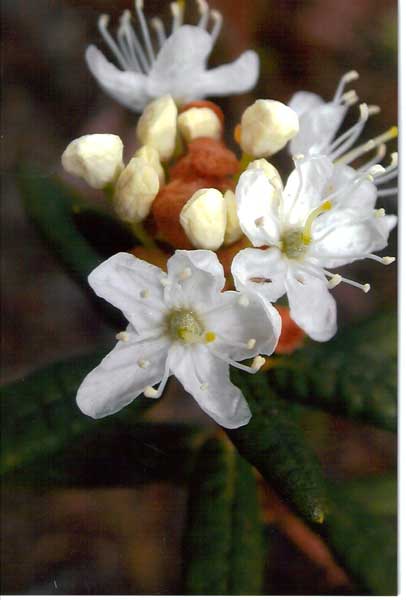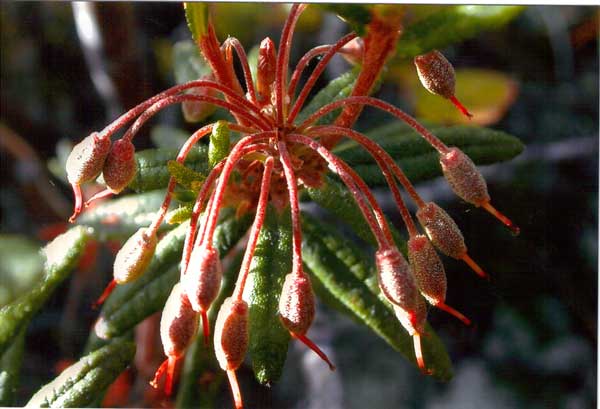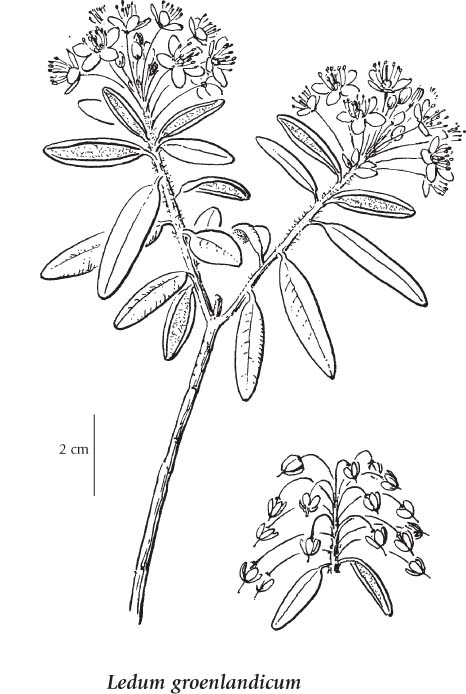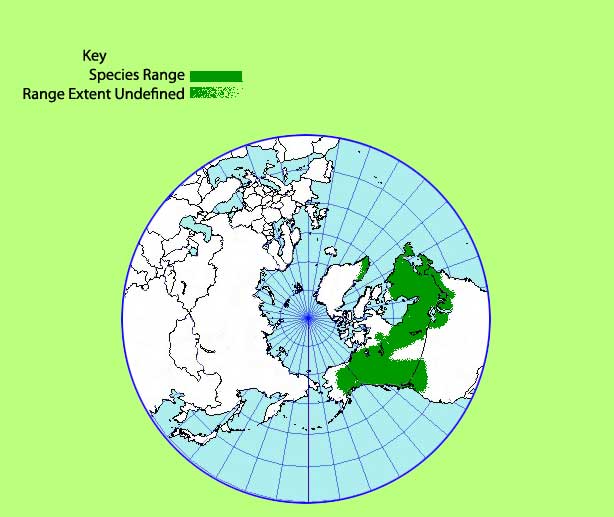Ledum groenlandicum : Labrador-tea
Taxonomy | Description | Biology | Ecology | Uses | Images | Range Maps
Taxonomy |
Scientific Name:Kingdom: Plantae Division:
Class: Dicoteldonae (two seed-leaves) Family: Ericaceae (Heath Family) Genera: Ledum (Labrador-tea) (Gk. From 'ledon' the Greek name for a genus of plants with simmilar leaves and aroma) Species: groenlandicum (of Greenland) Synonym(s): Rhododendron groenlandicum English Name(s):Labrador-tea, Hudson Bay Tea, Muskeg Tea, Bog Tea First Nation Names:lidii maskig (Gwichya) masgit (Teetlit)=muskeg tea |
Description |
Structure:
Leaves:
Reproductive Parts:
Seed:
Not to Be Confused With:
|
Biology |
Physiology:Life Cycle:Seasonal Cycle:
|
Ecology |
Animal Uses:Habitat:
|
Uses |
Modern:Industrial: Medicinal: Food: Traditional Gwich'in:Folklore: Industrial: Medicinal: Food: Traditional Other:Folklore: Industrial: Medicinal: Food: |
Images |
|
Typical plant with flowers in bloom Flowers coming into bloom Rusty hairs of underside of leaf Seeds on bent stalks Leaves and flowers Illustration from: Illustrated Flora of BC |
Range Maps |
|
World Range: North American; from west Greenland to LB to BC and AK, south to New England, and OR.
In Yukon: North to latitude 69N. |







